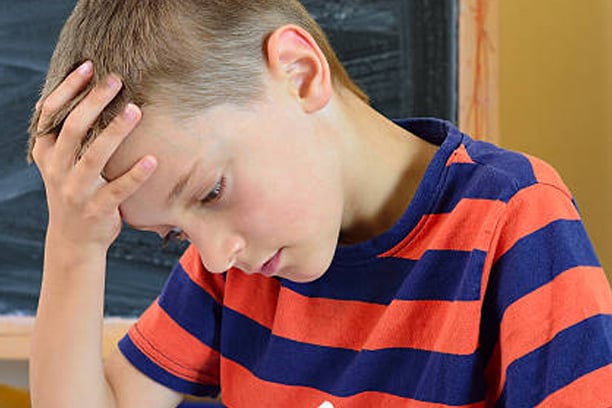Dysgraphia
How can the tutors support children with Dysgraphia
Dysgraphia is characterised by a difficulty converting the sounds of language into written words. A child with dysgraphia may reverse letters or mix up lower and upper case. The term is often specifically used to describe specific difficulty with handwriting.
Problems can occur for a range of reasons, however, and these can crop up in combination, or be more down to one thing or another. For example, one child’s dysgraphia may be more influenced by issues of comprehension, while another child may be struggling more with fine motor skills – problems that may also appear through things like difficulty tying shoelaces.
Dysgraphia often first presents in preschool or early primary, manifesting as a child struggling to hold and control writing implements (pencils, crayons, felt tips). But dysgraphia can also remain ‘hidden’ until later primary or secondary years, when writing tasks become more complex.
While dysgraphia can manifest on its own, it is often accompanied by other conditions such as dyslexia, ADHD or developmental coordination disorder/ dyspraxia.
It can be useful to think of three distinctive forms of dysgraphia.
These are:
Dyslexia Dysgraphia
This is where written words a child produces from their own thoughts appear jumbled, while words or drawings they are simply copying from elsewhere are accurate.
Spelling may be poor even if the child’s fine motor skills seem fine. Note that, despite the name, a child with dyslexia dysgraphia does not necessarily also have dyslexia.
Motor Dysgraphia
This is mainly down to a child struggling with fine motor skills, and can also manifest in more general problems with manual dexterity. Any written work – including copied work – tends to be poor. A child with this form of dysgraphia may be able to spell words out loud, while struggling to write them down.
Spatial Dysgraphia
This is underpinned by problems with spatial awareness, and may show as difficulty staying within the lines on a piece of paper or using appropriate spacing between words.
"We have had a wonderful experience with SENsational Tutors Ltd. Every week I am astonished to see that my son stays in the room learning and engaging with Siri for an hour and a half when I could not get him to sit for 15 minutes during home schooling. We can see an improvement in his maths, spelling, and handwriting and this has been confirmed by his classroom teacher as well. I am so glad that we found SENsational Tutors and so glad we found the amazing Siri. I would definitely recommend SENsational Tutors to anyone who is looking for a tutor for their SEN kids."
Sarah, W’s mother, London
Diagnosis
The diagnosis of dysgraphia often involves several specialists. A doctor, for example, may be needed to rule out other conditions that could be causing writing difficulties.
Once other causes are ruled out, a psychologist specialising in learning disorders can pinpoint dysgraphia via a range of tests. These might include vocabulary tests, fine motor skill challenges, or practical writing tests (including both copying words and asking a child to write their own choice of words).
During these tests, the specialist will observe a child’s pencil grip, hand and body position, and writing process.
Once dysgraphia has been diagnosed, a specialist tutor and/or an Occupational Therapist experienced in developmental coordination disorders can come up with a support programme tailored to each child’s form of dysgraphia.


How to help someone with Dysgraphia
There are many ways specialist support can help someone with dysgraphia.
One approach is to provide tailored instruction and assistance to improve writing skills. For a younger child, these might include practising writing letters and numbers in the air with big arm movements to provide a motor memory of different letter shapes. Others include using paper with raised lines to help a child stay within the lines, or pens/pencils with special grips.
Another approach – particularly for school assignments – is to provide a child with alternative testing methods to writing, such as an oral assessment. Or simply giving a child extra time for any writing assignment.
A third tack, meanwhile, is to reduce a child’s need to rely on expressive handwriting skills – whether by using a keyboard-based device, or providing a child with a scribe. Be wary, however, of going too far down a writing-free route, as many teachers and other experts point out the importance for every child to have at least some practical handwriting ability.
But with an expert tailored approach, any child with dysgraphia has the potential to learn a right way to write.
"Since Becky started helping Bethel she has started enjoying more writing and becoming more organised. She is helping my daughter a lot for example teaching her how to write poem which helps my daughter to enjoy writing and learning more. Also would like to express gratitude for the agency as they manage to find us a really great tutor for my children. It's very effective."
Winta, Bethal’s mother, London
Tutor Spotlight

Dora has over 20 years’ experience as a qualified teacher. She has a PGCE, QTS, MEd (Special and Inclusive Education) as well as a degree in Law, Politics and Sociolinguistics.
She has extensive experience working with students who are non-verbal, have cerebral palsy, dyspraxia, complex needs, speech and language delay, challenging behaviour, autism, dyslexia, ADD, ADHD, study skills requirements, processing and memory needs.
Dora shares her ideas and interventions when working with students with dysgraphia.
1. Extra time and flexible deadlines:
“In view of the fact that dysgraphia has a negative impact on an individual’s writing and spelling abilities, a student displaying this trait may require more time to process new tasks than a neurotypical student would. Pupils diagnosed with dysgraphia can greatly benefit from being given extra time to complete their assignments. The fact that time is limited is of course a key factor in every session, but it is also essential that extended and flexible deadlines for submitting homework should be set”
2. Being prepared and organised:
“Writing things out by hand can be very frustrating for pupils diagnosed with dysgraphia and can cause them to have difficulty in keeping up with the lesson; therefore, reducing note- taking strain by allowing such pupils to use computers, or by providing electronic copies of material in advance, may make a considerable difference. ‘Fill in the blanks’ and matching exercises (both of which test comprehension without requiring a lengthy written response) are also very helpful.
3. Using different writing aids:
“On a practical note, students with dysgraphia may find it easier to write using wide- stemmed pencils and pens, or if they apply rubber grips to their writing utensils. It should be borne in mind that ballpoint pens can sometimes release an excessive amount of ink if they are manipulated in certain ways: therefore, felt-tip pens should be preferred, and a supply of erasers kept handy.
4. Think outside the box:
“Pupils with dysgraphia may be helped to write more accurately by providing graph paper to guide them in their letter placement and spacing. Also, colourful, lined paper can be helpful for students who tend to write using larger letters.”




